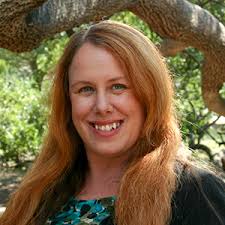My friend is having trouble dealing with the challenges of leading a congregation, caring for a sick infant and responding to a host of invitations for random acts of ministry. She is being careful not to overcommit. The congregation is supportive in every way, but she is worried about missing an opportunity that would benefit the church.
Those who know me well will likely find it funny (or aggravating) that I, someone who fails to return email promptly because of overscheduling, am giving advice on time management. That is the point; we all have trouble keeping up.
In network theory, the hub and spokes method of networking is regarded as critical to getting connections started, but is a temporary state that is unsustainable. As long as my friend (and the rest of the good ministers I know) defines ministry as connecting to and meeting every need that is presented, the theory says she will soon run out of time, energy and patience. The hub and spokes will break down.
For generations, congregations have been masters at inviting folks beyond a relationship with the pastor to membership in community. Congregations have been organizing small groups for learning, support and work forever. No one expects the pastor to be the only caregiver in a congregation. We might expect the pastor to have a specific role in certain situations, but the pastor who tries to do it all will not last long.
As my friend explained her situation, she remarked that one of the main reasons she felt overwhelmed was that her sermons were increasingly read on the internet. Strangers were emailing and asking for help, service and more. We wondered together how she might invite them into the network of the congregation, rather than to relationship with her alone.
The rise of email has made many more people accessible to each other with lightning speed. But social media is different. It creates new spaces for connecting people to each other. These forms require some energy from a pastor, but like the spaces of old, others will carry the responsibility alongside.
Pastor Keith Anderson and scholar Elizabeth Drescher have published “Click 2 Save: The Digital Ministry Bible,” where they feature more than 40 ministry leaders using different types of social media to foster community.
“Social media is the place where people are meeting, connecting, learning and getting news, and keeping track of their interests,” Anderson said in an interview with Faith & Leadership. “As somebody in ministry who wants to share the gospel, I need to be in that digital space just as much as I need to be in the church office or in my community. Also, it’s a place where young adults are gathering, a group that the church finds difficult to reach.”
As when entering other ministry settings, the first step is to listen.
Good pastors don’t enter the hospital room shouting about the topic for next Sunday’s sermon. Neither should we use Facebook as only a place for one-way communication. Social media is much more like meeting a crowd at the coffee shop rather than tacking an announcement on the bulletin board.
Anderson understands social media as a tool for nurturing relationships. Dedicating 20 to 30 minutes twice a day considering what to offer and how to respond to others through social media is a little different than figuring out who to visit in the hospital or organizing other aspects of ministry. Yet it can create the conditions that invite others to listen and respond to each other.
If my friend can invite folks into a space for conversation with her church, she will be able to respond with an offer of a relationship that is nurtured by much more than her own energy.







